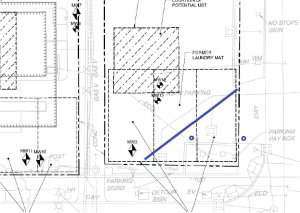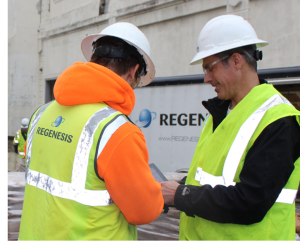 Throughout Canada, real estate developers and property owners are looking for ways to develop a significant number of brownfield sites as part of their long-term real estate strategy in residential, retail, and commercial property. While the redevelopment of these large parcels may seem to represent attractive investment opportunities, at the same time they also pose a very real challenge due to their contaminated past and the complex and time consuming remediation needed to meet regulatory compliance standards. Because the leftover environmental issues at brownfield sites vary from location to location, and state and provincial agencies and regulators can be involved in the cleanup and redevelopment process, new layers of complication mean success often hinges on covering each and every aspect of a brownfield site’s cleanup.
Throughout Canada, real estate developers and property owners are looking for ways to develop a significant number of brownfield sites as part of their long-term real estate strategy in residential, retail, and commercial property. While the redevelopment of these large parcels may seem to represent attractive investment opportunities, at the same time they also pose a very real challenge due to their contaminated past and the complex and time consuming remediation needed to meet regulatory compliance standards. Because the leftover environmental issues at brownfield sites vary from location to location, and state and provincial agencies and regulators can be involved in the cleanup and redevelopment process, new layers of complication mean success often hinges on covering each and every aspect of a brownfield site’s cleanup.
Fortunately, with today’s turn-key solutions in environmental remediation, there are a variety of steps property owners and developers can take to ensure they avoid a myriad of possible monetary and litigious pitfalls. As a global leader in science-based environmental remediation products and solutions, REGENESIS provides a comprehensive range of turn-key solutions that effectively mitigate the evolving issues and risks associated with these sites. Experts in the field of successful remediation of brownfields, REGENESIS offers the following suggestions to ensure your brownfield redevelopment efforts meet or exceed expectations:
1.) Be Aware of the Exact Type of Contamination and Required Remediation
Since conditions vary, every brownfield site will require careful scrutiny regarding contamination and the acceptable remediation methods. It is wise to begin with a comprehensive evaluation of the contamination and how well it has been documented in the past, both in order to prepare for the cost of mitigating it and to protect the new developer from possible future litigation. This thorough evaluation will help to determine if additional measures in site cleanup will be necessary, such as transporting contaminated soil to a remote location, treating or diverting groundwater, installing vapor mitigation systems, or capping certain types of contamination. Also, be aware that costs can be much higher with a brownfield than with other types of construction projects, due to cleanup and management of contaminated soil and groundwater and design and development tweaks that may need to be made in order to mitigate future issues.
2.) Look for Tax Breaks and other Incentives

Numerous successful brownfield revitalizations across Canada have been completed with the help of grants and other incentives from federal, provincial, and local organizations interested in seeing environmental contamination cleaned up, and forgotten parcels of land used to create jobs and other community benefits. Although it takes time to uncover these sources of potential funding, you may be surprised by the positive results of your efforts. As an example, incentives may be available for projects in disadvantaged communities, and many provinces and municipalities have grant and low-interest loan programs designed to speed the redevelopment process along.
In Ontario, there are a number of programs and tools that may be used to help encourage brownfield redevelopment. Many Ontario municipalities use special financial programs to offer incentives to encourage brownfield redevelopment in their communities. One such program offered is the Brownfields Financial Tax Incentive Program (BFTIP), an initiative of the government of Ontario to encourage the cleanup and redevelopment of brownfield properties. It allows municipalities to provide property tax assistance to property owners in connection with environmental rehabilitation of brownfields properties within an approved community improvement project area.
3.) Secure Protection from Litigation
In addition to letters confirming that no further action or remediation needs to be taken at a brownfield site, other agreements such as covenants not to sue can protect developers from potential exposure to lawsuits resulting from third-party liability issues if contamination spreads to abutting lands or new contamination is discovered. Keep in mind however, that some of these protections can vary by site and should be studied closely, as they may not take effect until after the site has been cleaned up, so during the interim period there can be potential exposure.
That exposure can be addressed in a number of ways, including crafting respective purchaser agreements in which the seller — if a solvent seller is involved — can retain some of the risk. In this situation, the developer often agrees to facilitate remediation of the site and the parties agree not to litigate over the cleanup of contaminants caused by the seller.
In many cases with brownfields, developers also take on environmental insurance, which often takes the form of coverage after a certain cap has been exceeded in connection with cleanup. Once many of the legal and financing issues have been addressed, a developer can secure approval for a project more easily by incorporating any necessary mitigation into the construction plan.
4.) Be Creative with the Development Plan
Almost every brownfield redevelopment project involves some form of remediation, whether it’s digging up contaminated soil, covering up a landfill, or having groundwater tested and treated for pollutants. One way to mitigate the costs of doing this work is to make it part of the overall development plan.
The strategy here is to incorporate the remediation of the site into the overall development plan, so that you’re minimizing the cost of the cleanup as much as possible by having it become part of the construction cost.
One simple but common example is complying with soil removal requirements in connection with digging out space for a subsurface parking lot. The cost of hauling the contaminated soil away may increase the price of excavating the land, but if it can be used to house cars, that cost is offset.
And if developers are willing to adjust their plans slightly, a site on which it previously seemed impossible to build anything but another factory can turn out to be a prime location for a mixed-use or shopping center development.
An example of being flexible and exploring various options is when a team advised a developer to flip his construction plan, moving a parking lot to cover a capped contamination site so the accompanying retail building wouldn’t be negatively affected, saving millions of dollars.
5.) Consider a Proven Remediation Solution through REGENESIS
REGENESIS simplifies the environmental remediation process by providing industry-leading solutions including remediation products, technical support, and the option for expert, in-field application services. As a result, our environmental consulting firm customers benefit from a streamlined process which uniquely brings both product and technology application together with a high-degree of certainty. Since no one knows a product better than the manufacturer, this unique arrangement saves time, energy and money for all parties involved.
Request a Design today. If you don’t need a formal site design but have questions or simply want to explore some ideas Contact Us to get in touch with a local representative.


 Americas
Americas Europe
Europe Français
Français Deutsch
Deutsch Italiano
Italiano Español
Español


